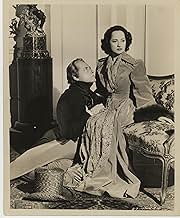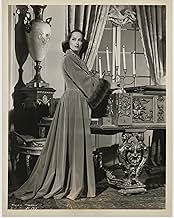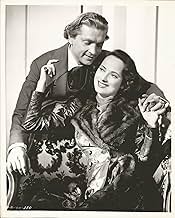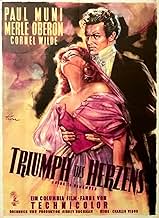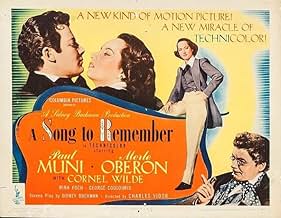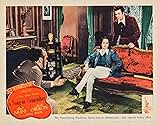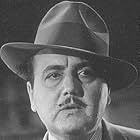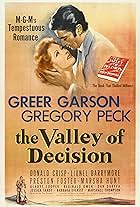IMDb RATING
6.6/10
1.7K
YOUR RATING
Biography of Frederic Chopin.Biography of Frederic Chopin.Biography of Frederic Chopin.
- Nominated for 6 Oscars
- 1 win & 7 nominations total
Sig Arno
- Henri Dupont
- (uncredited)
Dawn Bender
- Isabelle Chopin - Age 9
- (uncredited)
David Bond
- Lackey
- (uncredited)
Walter Bonn
- Major Domo
- (uncredited)
Eugene Borden
- Duke of Orleans
- (uncredited)
William Challee
- Titus
- (uncredited)
Paul Conrad
- Waiter
- (uncredited)
Gino Corrado
- Man at Pleyel's
- (uncredited)
Peter Cusanelli
- Balzac
- (uncredited)
Norma Drury
- Duchess of Orleans
- (uncredited)
Claire Du Brey
- Madame Mercier
- (uncredited)
Storyline
Did you know
- TriviaLiberace, who was in 1945 performing as "Walter 'Buster' Keys," stated that he got the idea of having an ornate candelabra on his piano from the scene in this film when George Sand (Merle Oberon) carries a candelabra into the darkened salon and places it on the piano to reveal Chopin as the pianist rather than Franz Liszt.
- GoofsAlmost all the pianos in the movie are artcase pianos made after the death of Chopin, the sound we hear is also of modern pianos.
- Quotes
George Sand: [to Chopin] Discontinue that so-called Polonaise jumble you've been playing for days.
- ConnectionsFeatured in Liberace (1988)
Featured review
Knowing that this was Liberace's favorite film should give you an idea of what this film is like--in fact, his trademark candleabra on the piano was taken from one of the most memorable moments in the film.
This was a high profile production for Columbia in 1945, with lots of money thrown at the sets and costumes, and actually filming in color (remember, Columbia was still a second-rank studio during World War II--usually only spending major money on its Rita Hayworth films). Consequently, this biography of Chopin is beautiful to look at--but a bit overboard at the same time. It's certainly not minimalist!
As if competing with the lavishness of the design, the acting (particularly by Paul Muni) is waaaay over the top, and the storyline refashions Chopin's life into a very heavy melodrama. The dramatics are so ham-handed that the Harvard Lampoon in 1945 gave the film an award for the "ketchup on the keys" sequence. Possibly the most interesting aspect of the film (other than its campiness) is how this costume biography is inflected with aspects of 40s film noir. Merle Oberon as author George Sand is the film's femme fatale, potentially drawing Chopin down the wrong creative path. And, since the film was made while World War II was still being fought, the film has to make allusions to patriotic duty (especially since Chopin was Polish, and World War II officially broke out when Hitler invaded Poland in 1939).
So--you have tons of visual excess, some sumptious renditions of Chopin pieces, and a weird discussion of gender relations and wartime responsibilities. All in all, it's a wild piece of gorgeous junk.
This was a high profile production for Columbia in 1945, with lots of money thrown at the sets and costumes, and actually filming in color (remember, Columbia was still a second-rank studio during World War II--usually only spending major money on its Rita Hayworth films). Consequently, this biography of Chopin is beautiful to look at--but a bit overboard at the same time. It's certainly not minimalist!
As if competing with the lavishness of the design, the acting (particularly by Paul Muni) is waaaay over the top, and the storyline refashions Chopin's life into a very heavy melodrama. The dramatics are so ham-handed that the Harvard Lampoon in 1945 gave the film an award for the "ketchup on the keys" sequence. Possibly the most interesting aspect of the film (other than its campiness) is how this costume biography is inflected with aspects of 40s film noir. Merle Oberon as author George Sand is the film's femme fatale, potentially drawing Chopin down the wrong creative path. And, since the film was made while World War II was still being fought, the film has to make allusions to patriotic duty (especially since Chopin was Polish, and World War II officially broke out when Hitler invaded Poland in 1939).
So--you have tons of visual excess, some sumptious renditions of Chopin pieces, and a weird discussion of gender relations and wartime responsibilities. All in all, it's a wild piece of gorgeous junk.
- SGriffin-6
- Nov 8, 2000
- Permalink
Details
- Runtime1 hour 53 minutes
- Aspect ratio
- 1.37 : 1
Contribute to this page
Suggest an edit or add missing content




